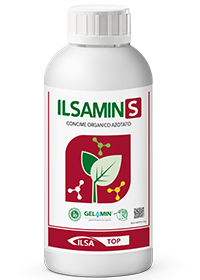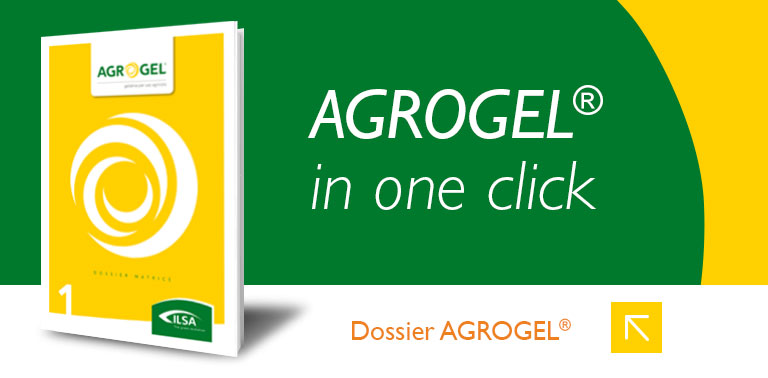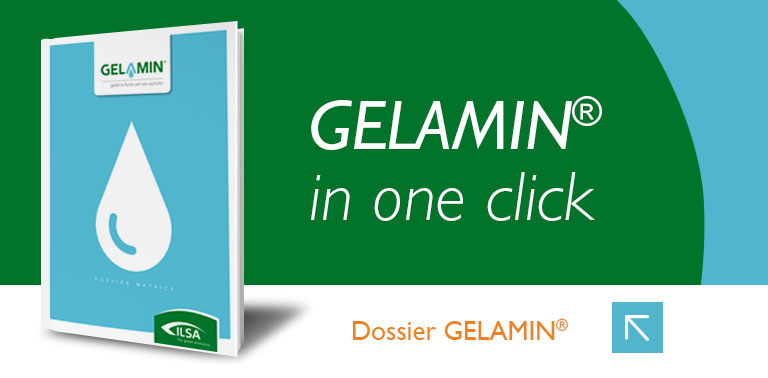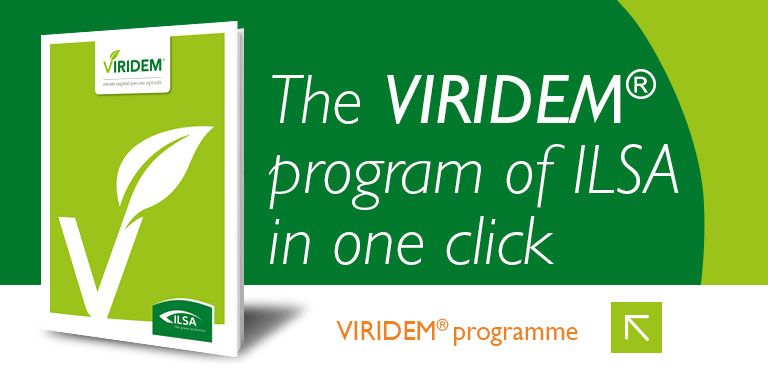FLUID ORGANIC FERTILIZER
WITH SULFUR
ILSAMIN S is a liquid nitrogen organic fertilizer containing 20% highly available sulphur. It is Gelamin® based and contains amino acids obtained from enzymatic hydrolysis; its features include high stability, pH sub-acid and low conductivity, such as to allow mixing with all the main formulations present on the market, including plant protection products. ILSAMIN S, applied on the foliage at the beginning of the vegetative growth phase of vines and fruit trees produces organic nitrogen and carbon, amino acids and sulphur which are important for nourishing plants and for improving their vegetative growth; above all in stressful situations.
- It supplies nitrogen in the form of high efficiency amino acids and sulphur
- It nourishes and prevents the deficiencies of sulphur and other elements
- It increases the final quality of vegetables and fruit
- It improves the vegetative well-being of plants
- Allowed in organic farming
On olive trees, vegetables in greenhouses and in open fields, ILSAMIN S is useful both in the early vegetative phases and during ripening, thus favouring the improvement of the final quality, in terms of oil yield, flavours and aromas. ILSAMIN S is also suitable for cereals and industrial and oilseed crops. It is rapidly absorbed at the leaf level, thanks to the action of laevorotatory amino acids and peptides obtained from enzymatic hydrolysis.
COMPOSITION
-
Total Nitrogen (N) 4 %
- Of which: Organic Nitrogen (N) 4 %
- Sulfur Trioxide (SO3) 50 %
- Organic Carbon (C) 15 %
- Total Aminoacids 25 %
- pH 5,5 +- 0,5
- DENSITY 1,28 +- 0,02 kg/dm3
- CONDUCTIVITY E.C. 0,43 +- 0,20 dS/m
Doses and methods of use of the fertilizer
-
Cereals
-
All4-5 kg/ha2-4 applications every 8-10 days in full vegetative developmentFoliar
-
-
Citrus
-
All3-3,5 kg/ha2-4 applications every 10-15 days from early vegetative developmentFoliar
-
-
Fruit
-
Kiwi3-3,5 kg/ha2-4 applications every 10-15 days from early vegetative developmentFoliar
-
-
GrapeVine
-
All3-3,5 kg/ha2-4 applications every 10-15 days from early vegetative developmentFoliar
-
-
Greens and Nurseries
-
Ornamental and Floral Crops300-400 g/100 lt waterDuring the cycle, every 10-12 daysFoliar
-
-
Industrial Crops
-
Cotton4-5 kg/ha2-4 applications every 8-10 days in full vegetative developmentFoliar
-
Flax4-5 kg/ha2-4 applications every 8-10 days in full vegetative developmentFoliar
-
Hemp4-5 kg/ha2-4 applications every 8-10 days in full vegetative developmentFoliar
-
Oil seed rape4-5 kg/ha2-4 applications every 8-10 days in full vegetative developmentFoliar
-
Peanut4-5 kg/ha2-4 applications every 8-10 days in full vegetative developmentFoliar
-
Rape4-5 kg/ha2-4 applications every 8-10 days in full vegetative developmentFoliar
-
Sesame4-5 kg/ha2-4 applications every 8-10 days in full vegetative developmentFoliar
-
Soy bean4-5 kg/ha2-4 applications every 8-10 days in full vegetative developmentFoliar
-
Sugar beet4-5 kg/ha2-4 applications every 8-10 days in full vegetative developmentFoliar
-
Sunflower4-5 kg/ha2-4 applications every 8-10 days in full vegetative developmentFoliar
-
Tobacco4-5 kg/ha2-4 applications every 8-10 days in full vegetative developmentFoliar
-
-
Leafy vegetables
-
Artichoke3-4 kg/ha2-4 applications every 8-10 days from 10 days after transplantingFoliar
-
Arugula3-4 kg/ha2-4 applications every 8-10 days from 10 days after transplantingFoliar
-
Basil3-4 kg/ha2-4 applications every 8-10 days from 10 days after transplantingFoliar
-
Beet3-4 kg/ha2-4 applications every 8-10 days from 10 days after transplantingFoliar
-
Chicory3-4 kg/ha2-4 applications every 8-10 days from 10 days after transplantingFoliar
-
Chicory3-4 kg/ha2-4 applications every 8-10 days from 10 days after transplantingFoliar
-
Endive3-4 kg/ha2-4 applications every 8-10 days from 10 days after transplantingFoliar
-
Lettuce3-4 kg/ha2-4 applications every 8-10 days from 10 days after transplantingFoliar
-
Parsley3-4 kg/ha2-4 applications every 8-10 days from 10 days after transplantingFoliar
-
Spinach3-4 kg/ha2-4 applications every 8-10 days from 10 days after transplantingFoliar
-
-
Legumes and potatoes
-
Potato4-5 kg/ha2-4 applications every 8-10 days in full vegetative development
-
-
Olive Tree
-
All2,5-3 kg/ha2-3 applications, every 15-20 days, from the olive ripening phase (The end of August)Foliar2,5-3 kg/ha2-4 applications every 10-15 days from early vegetative developmentFoliar
-
-
Pome fruits
-
Apple3-3,5 kg/ha2-4 applications every 10-15 days from early vegetative developmentFoliar
-
Pear3-3,5 kg/ha2-4 applications every 10-15 days from early vegetative developmentFoliar
-
-
Stone fruits
-
Apricot3-3,5 kg/ha2-4 applications every 10-15 days from early vegetative developmentFoliar
-
Cherry3-3,5 kg/ha2-4 applications every 10-15 days from early vegetative developmentFoliar
-
Nectarine3-3,5 kg/ha2-4 applications every 10-15 days from early vegetative developmentFoliar
-
Peach3-3,5 kg/ha2-4 applications every 10-15 days from early vegetative developmentFoliar
-
Plum3-3,5 kg/ha2-4 applications every 10-15 days from early vegetative developmentFoliar
-
-
Vegetables
-
Brussels sprouts3-4 kg/ha2-4 applications every 8-10 days from 10 days after transplantingFoliar
-
Cauliflower3-4 kg/haFrom initial flowering every 10 to 12 daysFoliar
-
Courgette3-4 kg/ha2-3 applications, every 7-8 days, from fruit enlargementFoliar3-4 kg/ha3-4 applications, every 10-15 days, from pre-floweringFoliar
-
Eggplant3-4 kg/ha2-3 applications, every 7-8 days, from fruit enlargementFoliar3-4 kg/ha3-4 applications, every 10-15 days, from pre-floweringFoliar
-
Garlic / Scallion3-4 kg/ha3-4 applications during bulbs enlargementFoliar
-
Melon3-4 kg/ha2-3 applications, every 7-8 days, from fruit enlargementFoliar3-4 kg/ha3-4 applications, every 10-15 days, from pre-floweringFoliar
-
Onion3-4 kg/ha3-4 applications during bulbs enlargementFoliar
-
Pepper3-4 kg/ha2-3 applications, every 7-8 days, from fruit enlargementFoliar3-4 kg/ha3-4 applications, every 10-15 days, from pre-floweringFoliar
-
Savoy Cabbage3-4 kg/ha2-4 applications every 8-10 days from 10 days after transplantingFoliar
-
Spring Cabbage3-4 kg/ha2-4 applications every 8-10 days from 10 days after transplantingFoliar
-
Tomato3-4 kg/ha2-3 applications, every 7-8 days, from fruit enlargementFoliar3-4 kg/ha3-4 applications, every 10-15 days, from pre-floweringFoliar
-
Turnip3-4 kg/haFrom initial flowering every 10 to 12 daysFoliar
-
Turnip Tops3-4 kg/ha2-4 applications every 8-10 days from 10 days after transplantingFoliar
-
Dosages are purely indicative and may vary depending on pedoclimatic conditions and average yields expected.














.png)
















